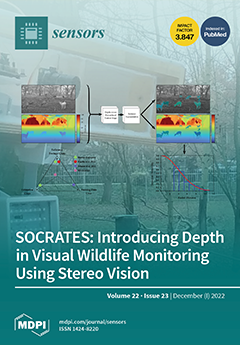The foot is a vital organ, as it stabilizes the impact forces between the human skeletal system and the ground. Hence, precise foot dimensions are essential not only for custom footwear design, but also for the clinical treatment of foot health. Most existing
[...] Read more.
The foot is a vital organ, as it stabilizes the impact forces between the human skeletal system and the ground. Hence, precise foot dimensions are essential not only for custom footwear design, but also for the clinical treatment of foot health. Most existing research on measuring foot dimensions depends on a heavy setup environment, which is costly and ineffective for daily use. In addition, there are several smartphone applications online, but they are not suitable for measuring the exact foot shape for custom footwear, both in clinical practice and public use. In this study, we designed and implemented computer-vision-based smartphone application
OptiFit that provides the functionality to automatically measure the four essential dimensions (length, width, arch height, and instep girth) of a human foot from images and 3D scans. We present an instep girth measurement algorithm, and we used a pixel per metric algorithm for measurement; these algorithms were accordingly integrated with the application. Afterwards, we evaluated our application using 19 medical-grade silicon foot models (12 males and 7 females) from different age groups. Our experimental evaluation shows that
OptiFit could measure the length, width, arch height, and instep girth with an accuracy of 95.23%, 96.54%, 89.14%, and 99.52%, respectively. A two-tailed paired
t-test was conducted, and only the instep girth dimension showed a significant discrepancy between the manual measurement (MM) and the application-based measurement (AM). We developed a linear regression model to adjust the error. Further, we performed comparative analysis demonstrating that there were no significant errors between MM and AM, and the application offers satisfactory performance as a foot-measuring application. Unlike other applications, the iOS application we developed,
OptiFit, fulfils the requirements to automatically measure the exact foot dimensions for individually fitted footwear. Therefore, the application can facilitate proper foot measurement and enhance awareness to prevent foot-related problems caused by inappropriate footwear.
Full article






